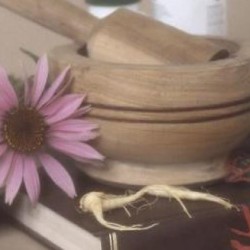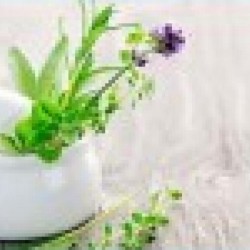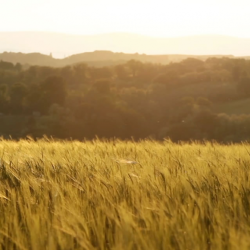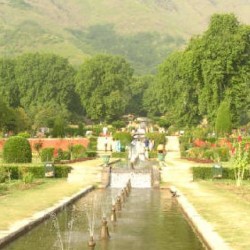
After the First World War, when the world was thrown into despairing darkness, there shone a ray of light, showing the way to experience the human being on a new and different level. A group of doctors in Central Europe assembled together and requested Dr. Rudolf Steiner to help them understand the Human Being in relation to health and illness, according to the higher cosmic laws, which sustain life on earth. On the basis of this question arose Anthroposophically oriented medicine to experience the human being in totality with all the forces in and around us.
Dr. Steiner’s medicinal view, which he presented to the doctors, is holistic and “Goethean” in its approach. Each part of the human being is related to the whole and the whole represented in every part of the organism. The forces of metamorphosis activate the organism and give each individual his or her own uniqueness of personality. Therefore each and every event in the life of a person is also a part in the wholeness of one’s destiny and connected most intrinsically and intimately with the organism. This makes each individual different.
Paracelsus, an initiate and physician of 15th century Europe, had observed this phenomena when he stated that “Nature is a spread out human beingand the human being is condensed nature”. He further adds “I have looked at them all, stones, plants and animals and they appear to be like the letters of the alphabet scattered on the pages of nature, while the human being is the complete and living word”. The whole world of nature reflects and unfolds in the individual, as nature is an infinitely differentiated human being. So in nature as also in humans, one sidedness means getting separated from the whole like a fall out of paradise. With the fall come illnesses as tipping over of a balance. Thus restoring balance, making whole or healing, happens on a higher level, on a new consciousness. The effort to overcome being ill brings a sense of inner freedom. “Healing” is answerable only after the person becomes ill because illness itself creates in oneself a new sense of awareness and raises one’s consciousness to face a different and more meaningful life style than what one had before. It is a rite of initiation into becoming whole and is supported by the efforts of the patient into receiving nature-oriented treatment which all organisms deserve.
Unfortunately, chemically based, hard-drug oriented medicine can rob the person of precious freedom to develop further and in making the effort of working on one’s self to become whole again. This is the apth of knowledge, which the illness offers. Becoming healthy takes a greater priority than remaining placid, since it is a process, which assimilates a new dimension in one’s personality, enriching one’s life. The whole procedure is celebrating life in its fullest. This spiritual entry into the doors of perception creates a sense of responsibility also towards one’s outer environment. The “inner doctor” activates the outer doctor. This in turn stimulates awe, respect and reverence, the forces of which work on the immune system. Here Dr. Steiner talks about moral forces, which facilitate the healthy working of the physical body. The forces of love, devotion, hope, all work on the different processes of the physical body.
Dr. Steiner raises medicine to a higher realm of moral responsibility as a process of purification not only of physical but of moral toxins as well, creating inner strength, which helps to restore a new balance. On the basis of such spiritual/practical insight into the depths of the problems confronting an individual, one can treat any tropical illness so as to cleanse out the entire system and to guard it from danger of relapse. Balance needs polarity, in order to create a center. Dr. Steiner speaks about the human system as a means of transforming the outer world and making it one’s own. This could lead to the fact that even a small leaf of salad can turn lethal for the organism, if the person who eats it is not able to make it “one’s own”. Transforming is a process of alchemy like digestion, not just for food but for sense impressions as well. This ability to transform is an activity of the immune system. For example, a tired, a traumatic or a dissipating situation, which a person is not able to work through, makes one susceptible to acute or chronic illnesses. That is why such an inner process of alchemy is also necessary for new impressions during travels, which one confronts already before departure to a different country. Such a spectrum of interaction of the environment has to be transformed in order to maintain a healthy balance of the body, mind and soul. If this balance is disturbed, and if the alchemical transformation in the person does not take place, then one becomes susceptible to all kinds of diseases, from malaria to dengue and God knows what else. Then is the time when one needs a holistic approach to eradicate the disease.
Since time immemorial, the “trinity based approach” has been implemented in a number of traditional forms of medicine. Be it Ayurveda, with the threefold aspect of Kafa, Pita and Vata, or the Paracelsian trinity of Salt, Mercury and Sulfur, humanity has experienced to a certain extent the threefold based treatment on all levels, from the physical to the spiritual.
The Anthroposophical approach distinguishes three systems, which can be characterized by a variety of names:
The sensory-nervous system, which is primarily located in the head, relates to thinking
The rhythmical system, primarily located in the region of the chest, relates to feeling
The metabolic-limb system, which is located in the limbs and digestive organs, relates to the will or the action aspect of our personality
This threefold system is not only interconnected, but is constantly interacting in a healthy person. The polar opposite systems are a landscape of the person; winter, relating to the head pole of the sensory-nervous system and summer, relating to the limb pole of the digestive-metabolic system. Both these systems should communicate with each other in the rhythmical system of the heart region. Here the balance is maintained.
These two systems are not only polar opposites, like the summer and winter poles of the earth, but one system creates, the other destroys. The spring and autumn part of nature could be likened to the rhythmical system, which in turn intermediates between warmth and coolness, harmonizing the destructive effects of one and the creative effects of the other. Here lies the strength of metabolism, anabolism and catabolism.
Both the warmth and the cooling systems are of utmost importance to regulate the bodily temperature. In case the warmth pole of the metabolic system overlaps or dominates or suppresses, the cool pole of the sensory-nervous system or vice versa, then the entire system is thrown off balance. This may lead either to inflammatory or to hardening illnesses and problems, not only of the body but of the mind as well. For instance, migraine is warmth on the false side of the body.
According to Dr. Steiner, illness is actually a positive force working on the wrong level, when the rhythmical system does not intermediate properly and disengages itself, leading to “either this or that”. This could mean that the rhythmical system is weak in character and that the relationship between the polarities is not properly established.
With the threefold nature of the person, Dr. Steiner brings into awareness yet a fourfold principal, relating to the four main elements of earth, water, air and fire, with their respective temperaments and constitutions.
The physical body, with earth as its element, relates to the mineral kingdom
The etheric or life body, with water as its element, relates to the plant kingdom
The astral body, with air as its element, relates to the animal kingdom
The Ego organization or the consciousness of the Self, with fire as its element, relates to the Spirit in the Human Being.
These four systems intermingle with each other, one dominating the other to create innumerable variations, physically, emotionally and mentally.
Dr. Steiner has listed further facets with intricate and detailed descriptions of the complex workings of the personality of the human being in relation to the universe. He has given step-by-step indications for diagnosis, along with extremely diverse treatments on all levels.
Dr. Steiner has written several books bringing more light to experience the human being. Secondary literature is also available. One such book by Dr. Steiner, in collaboration with Dr. Ita Wegman, a Dutch physician, is titled “Fundamentals of Therapy, an extension to the Art of Healing, extending Practical Medicine”. Yet another book by Dr. Steiner is “Guidelines to understanding healing based on Anthroposophical Spiritual Science” (28th August, 1923, GA 319). Most of the books are in original German, but almost all are translated into English and several other languages. All this literature could be had from: “Rudolf Steiner Verlag, Goetheanum, CH-4143 Dornach, Switzerland.
Yearly medicinal training in Hyderabad for medical students and medical practitioners is given by the Medical Section of the Goetheanum, under the excellent guidance of Dr. Michaela Gloeckler.
If one makes an effort to understand the intricate workings of the organism, then any proper treatment could be given by a responsible doctor for any illness – be it tropical or otherwise.
The holistic methods of supporting the patient’s health-giving forces are not only through diversely prepared, Anthroposophically oriented medication, but also through medicinal related movements of Curative Eurythmy. Included are also baths, massage and other relevant art therapies like painting, sculpture, speech formation and music therapy, which could be had at any Anthroposophically oriented clinic or institution. All this combined with proper nourishment and therapeutic life style of moderation signifies a complete sense of the term “holistic”.
This understanding, based on Spiritual Science, and the appropriate treatment for the patient, could be practiced by any system by a medical practitioner.
That is why Anthroposophical medicine is not considered as an “alternative” medicine. This special system of experiencing the microcosmic human being is complementary – extending one’s knowledge on a wider, deeper and higher plane of consciousness.
Anthroposophical Medicine is an enrichment to be able to diagnose thoroughly and treat the patient with further love and understanding. It is a patient oriented medicinal system, where one’s understanding is able to penetrate not only the physical but also the spiritual aspect of the person and in this the giving and receiving between the doctor and the patient is brought onto a perfect balance.
~ Dilnawaz Bana








